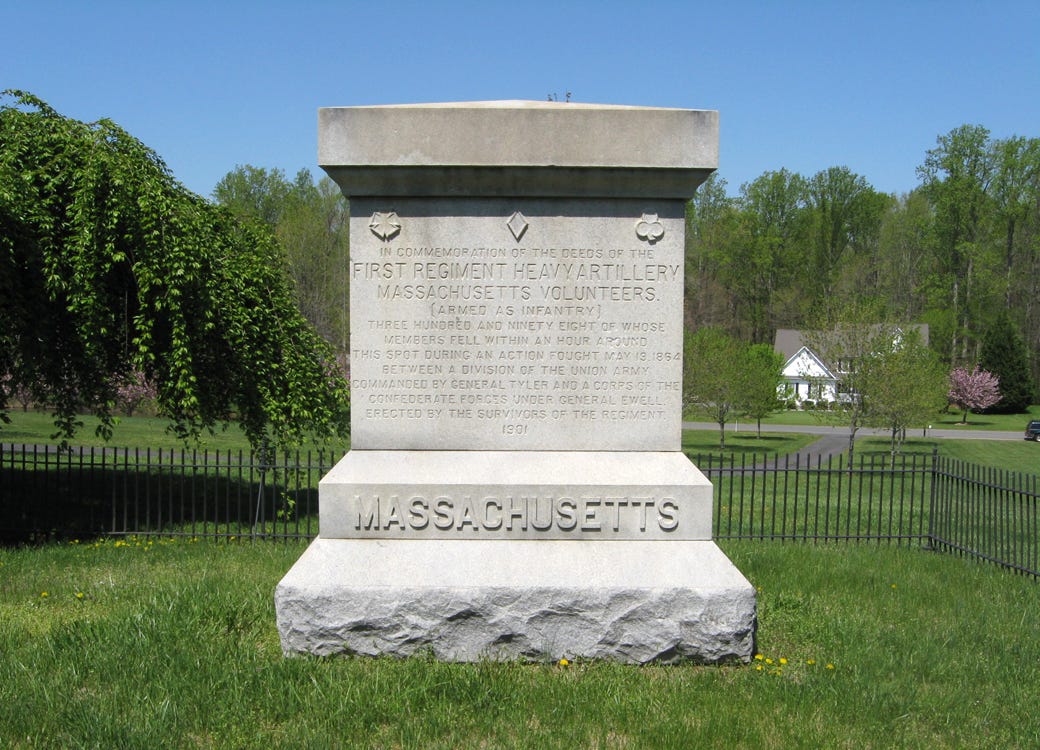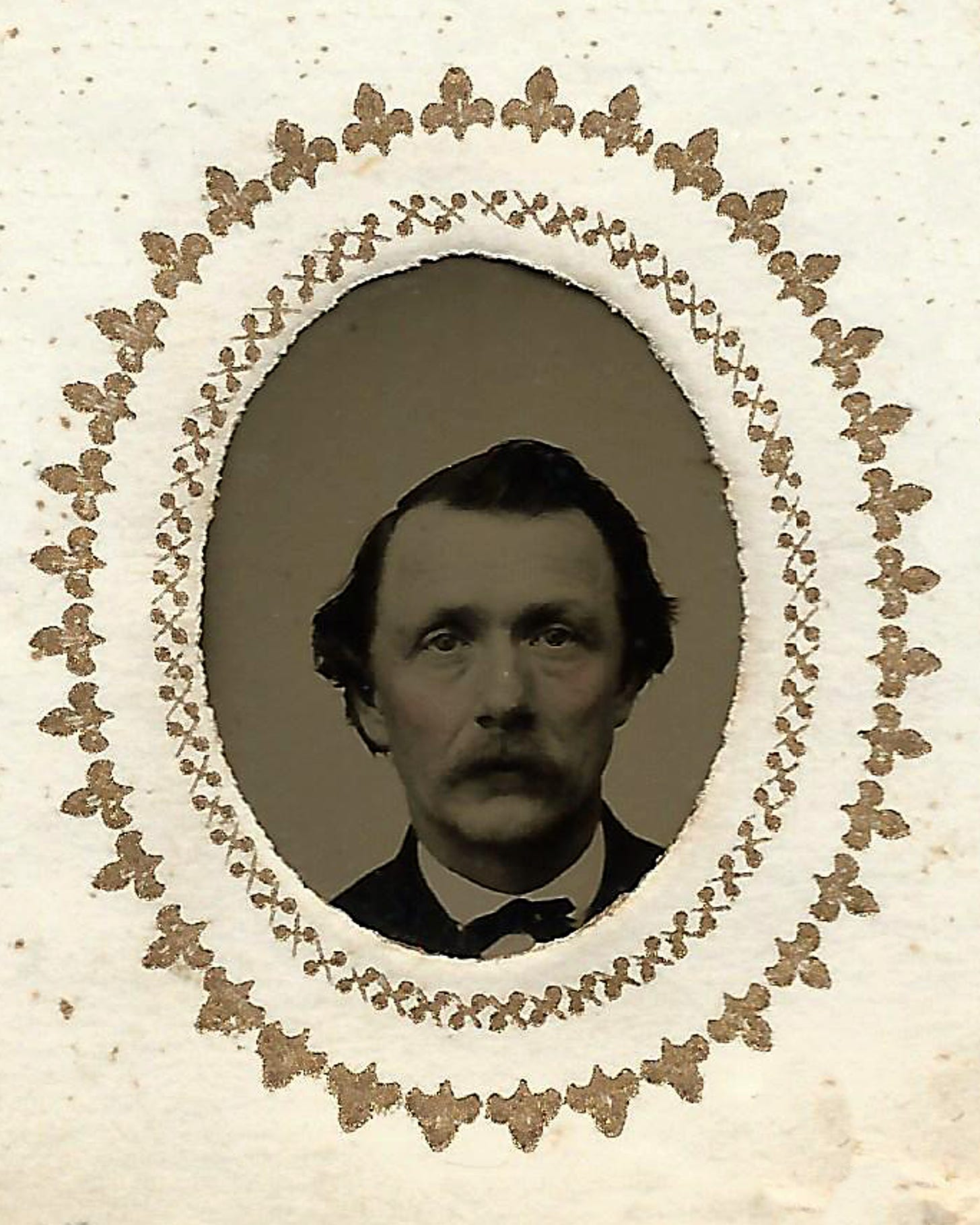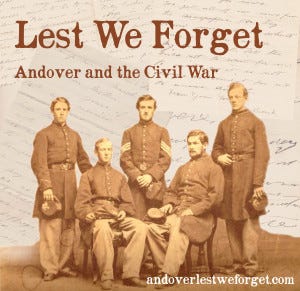Spotsylvania's harsh toll on Andover soldiers
On the 160th anniversary of the Battle of Spotsylvania, we're reposting a story written by Mike Morris Jr. in 2014.
Welcome or welcome back to History Buzz! If you’re a subscriber to the Buzz, thank you! If you’re new here, or you haven’t become a subscriber yet, hit that subscribe button to have History Buzz delivered directly to your inbox. If you can, please consider a paid subscription to support the research and writing that make History Buzz possible.
In Spring 2014, the History Center (then known as the Andover Historical Society), in cooperation with numerous community partners, presented a series of events commemorating the 150th Anniversary of the American Civil War. Stories and resources from the series live on through the website “Andover Lest We Forget.” (link)1
Today’s story was originally published in the Andover Townsman, June 5, 2014, long before we started History Buzz.
Spotsylvania's harsh toll on Andover soldiers
Written by Mike Morris, Jr.
On May 19, 1864, roughly 120 Andover citizens serving in Company H of the First Massachusetts Heavy Artillery Regiment received their baptism of fire at the Battle of Spotsylvania during the Civil War.
After nearly three years of manning forts around Harper’s Ferry and Washington, D.C., and with just 55 days remaining in their enlistments, these Andover soldiers had been ordered on May 14, 1864 to leave Washington to fight on the front lines as infantry.
On May 17, 1864, as they marched to join the Army of the Potomac, the Andover men were greeted with foreboding comments from veterans of the war’s heaviest fighting. Upon hearing their band playing, a wounded soldier along the road shouted: “Blow – you’re blowing your last.” Another yelled: “Grant’ll soon cut you down to fighting size.” Veterans taunted the Andover soldiers and their fellow heavy artillery units, calling them “Abe’s pets” and “Band box soldiers.”
During this grueling. 23-mile march, the Andover soldiers also passed “long lines of ambulances with ghastly loads.” One observed: “The sight of all these bloody, suffering, men was enough to impress the stoutest heart.”
Two days later, on May 19, 1864, the Andover men awoke to a day “beautiful almost beyond description.” While it’s impossible to know what soldiers like Augustine Russell and Epaphrus Bryant were thinking that morning, some might have remembered Andover at the start of the ar — filled with patriotic events and tearful goodbyes.
Exactly three years prior, on May 19, 1861, they had attended a sermon at South Church given by the Rev. Calvin Stowe, who prayed they might “endure hardship as a good soldier.” On June 4, 1861, some were at a flag-raising attended by novelists Harriet Beecher Stowe and Elizabeth Stuart Phelps.
On June 22, 1861, two days before they left Andover, much of the town, including former President Franklin Pierce, witnessed the presentation of a state flag to the Andover Company by students of Phillips Academy. Then on June 24, 1861, students of the Andover Theological Seminary and Phillips led the Andover Company, followed by throngs of residents, to the train station and off to war.
If such memories were on the Andover men’s minds the morning of May 19, 1864, they likely vanished when they learned “a small body of rebel cavalry had been seen.” In response, the Andover Company and its regiment were ordered to march immediately to Harris Farm outside Spotsylvania.
Upon their arrival and hearing sporadic firing in the woods facing them, the Andover Company and two other companies were ordered to march into the woods, which they did “as if on parade,” believing they were confronting a small Confederate force. Instead, these Andover soldiers, woefully inexperienced in combat, were about to meet the head of a legendary infantry corps previously commanded by Stonewall Jackson and toughened by three years of combat.

After the Andover soldiers proceeded 50 yards into the woods, the Confederates, who had been crouching in underbrush, rose up as if “out of the earth” and fired a terrible volley.
One soldier later wrote:
“In an instant, the scene was transformed from peace and quiet to one of pain and horror . . . Fully a half . . . (was) dead or disabled. The cries of pain from loved comrades, wounded or dying . . . the sound of leaden missiles tearing through the trees and the dull thud of bullets . . . produced a feeling of horror.”


You can read more about Andover Civil War soldiers and their family members on the Lest We Forget website. The American Battlefield Trust has a page dedicated to the Spotsylvania Court House battle.
Please leave a comment or ask a question. We love to hear from History Buzz readers and subscribers. If you enjoyed this story please consider becoming a subscriber to the Buzz.
~Elaine
Support for the 2014 Lest We Forget series was provided by The John S. and James L. Knight Foundation.






I'm a late-comer to civil war history. Regular visits to Charleston, South Carolina and a major battlefield in Virginia (with no Andover connections) have started to change that.
Found in Wayland MA, no statue to the veterans of the Civil War, but a book of first hand accounts of their time in service. The book can be found on Archive.org. "The Town of Wayland in the Civil War of 1861-1865: As Represented in the Army and Navy of the American Union"